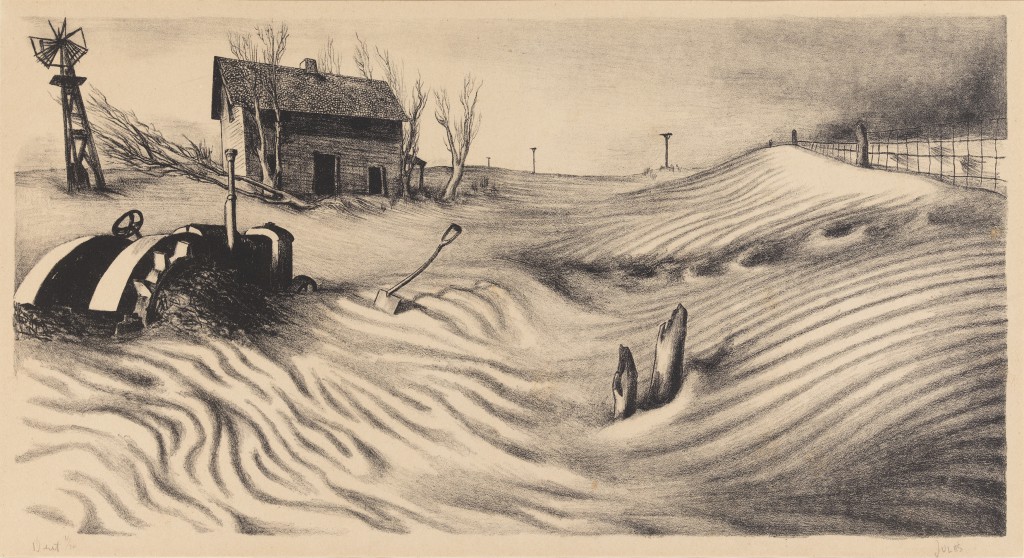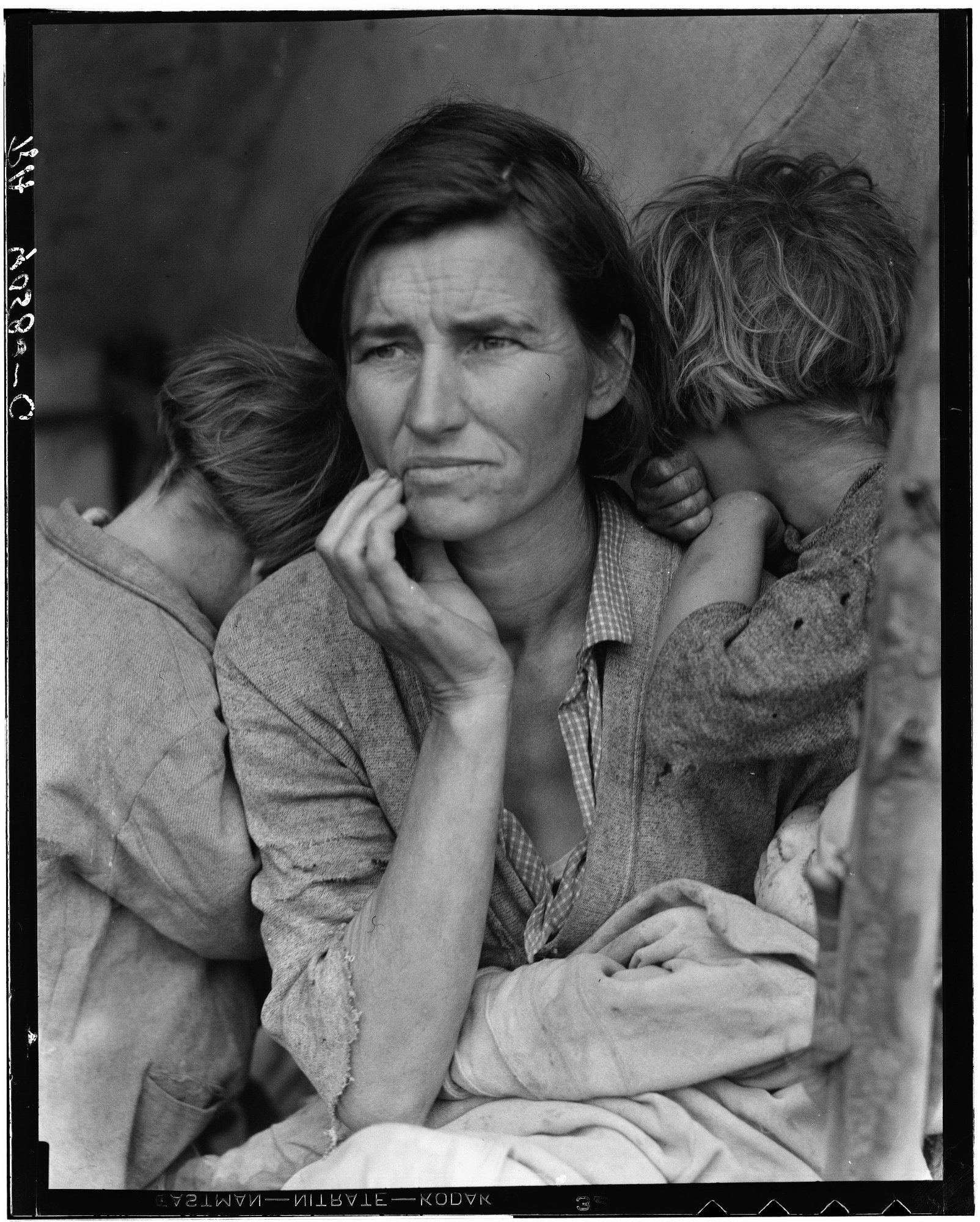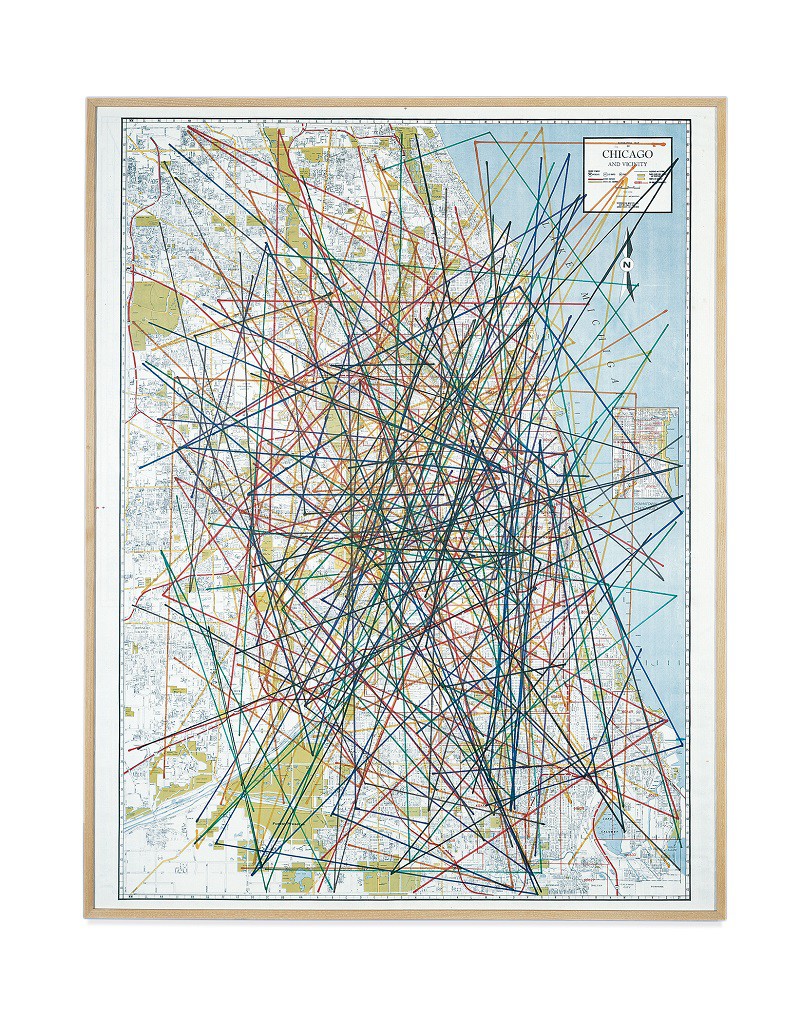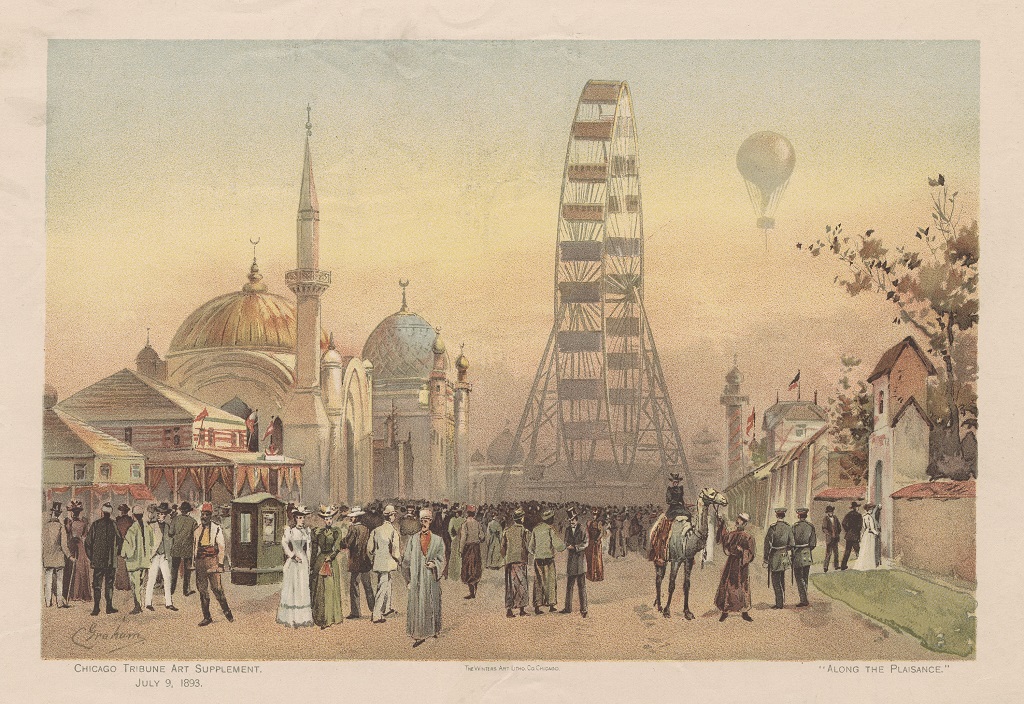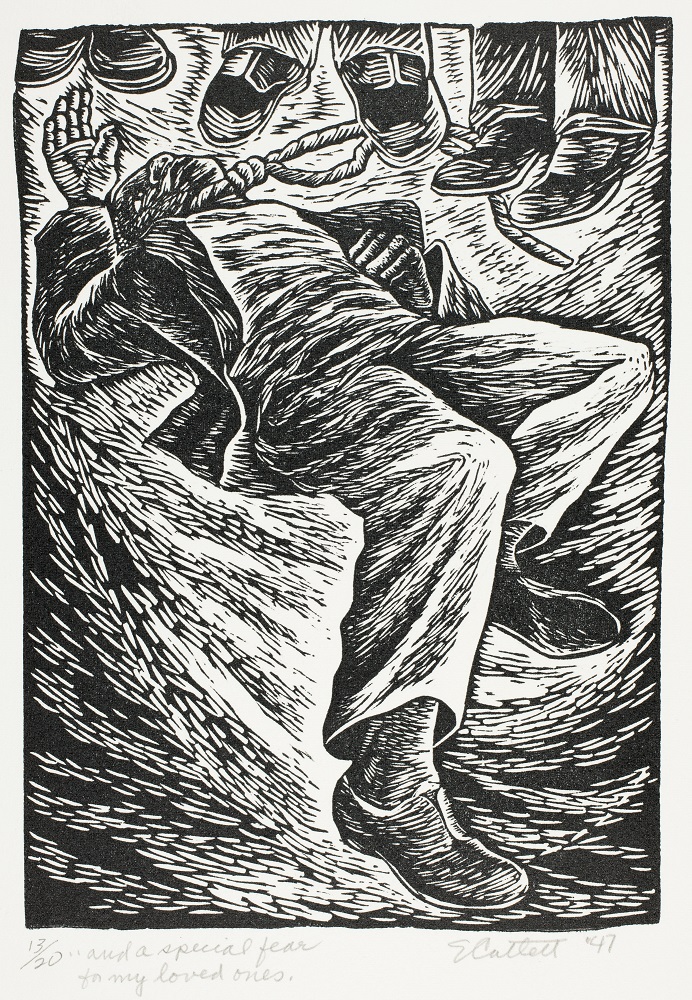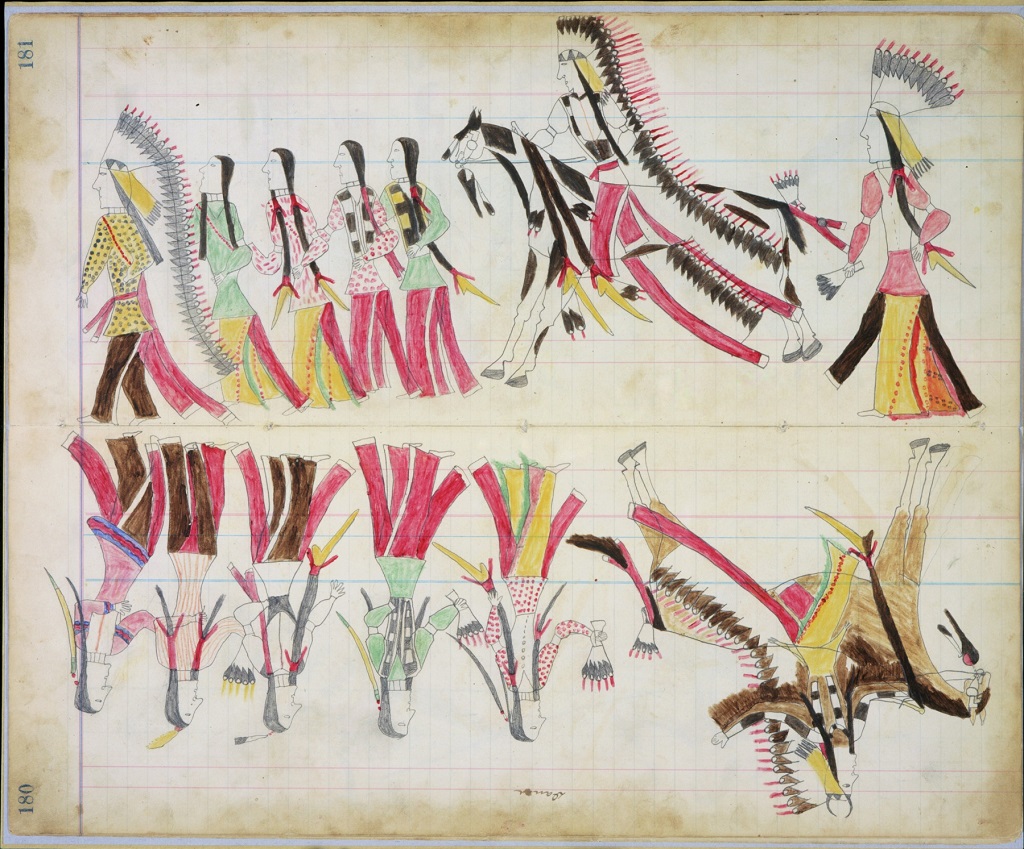Summary
The epic stories of hardship and survival during the Great Depression and Dust Bowl have inspired numerous artists and authors to think critically about the era and the experiences of those who lived at that time. These theme-related lessons provide a framework for closely reading and comparing a range of images and texts about the Dust Bowl, including works of art (a lithograph and documentary photographs), historical fiction, informational texts, maps, and timelines. The instructional activities allow students to critically analyze and interpret these images and texts in terms of the choices made by the artists and authors, their historic and cultural contexts, and the differences and connections among modes of communication.
Authors
Amy Andrews, Chicago Public Schools
Jennifer Chisholm, Evanston/Skokie District 65 Schools
Judy Koon, Mary and Leigh Block Museum of Art
Sarah Mack, Mary and Leigh Block Museum of Art
Corinne Rose, Manager of Education, Museum of Contemporary Photography
Grade Levels: 5–8
Related Art Studies
Related Lessons
The lessons related to this theme are listed below in a suggested sequence, but you may choose to teach just one lesson or any combination of them.
Experiencing a Dust Storm
Time Needed: 3 class periods, 40–50 minutes each
Summary: Students closely read and compare the lithograph Dust by Mervin Jules and “Blankets of Black,” a poem from Out of the Dust by Karen Hesse, in order to understand the effects of dust storms on people and places during the Dust Bowl years.
Works of Art
Essential Questions
- How do artists and authors help us to understand what it was like to endure hard times?
- How do artists and authors express ideas, tell stories, and capture history through the different techniques of their media?
- How does close reading help you understand the structure and meaning of an image or a text?
- What tools and techniques do authors and artists use to establish setting, mood, and tone?
Enduring Understandings
- Artists and authors sometimes use themes and symbols to communicate how an event affected people’s lives and our history.
- Key details reveal the content and tone of a text.
- Understanding a text’s structures and themes helps the reader/viewer understand the key ideas of an image or a text.
Documenting Lives: Dorothea Lange’s Migrant Mother
Time Needed: 1 class period, 40–50 minutes
Summary: Students will deepen their understanding of Dorothea Lange’s 1936 Migrant Mother and the tradition of documentary photography by conducting a close reading of this image and other related photographs, reading an informational text about Dorothea Lange, and listening to an interview with the subject of the photograph.
Works of Art
Essential Questions
- How do photographers express ideas, tell stories, and capture history through the tools and techniques of their medium?
- How can the close reading of a range of texts deepen your understanding of historic events?
- How does your awareness of the cultural and historic context of a work deepen your understanding?
Enduring Understandings
- Understanding a text’s structures and themes helps the reader to make meaning of the text.
- Key details reveal the content and tone of an image or a text.
- Reading informational texts about the cultural and historic context of a work of art deepens our understanding of the work.
Analyzing Point of View: “Freak Show” from Out of the Dust
Time Needed: 2 class periods, 40–50 minutes each
Summary: Students do a close reading of two photographs from the Dust Bowl period and of the poem “Freak Show” from Out of the Dust by Karen Hesse to understand how some individuals faced the challenges of the Dust Bowl and to discuss how the point of view of a writer or an artist may differ from that of the subject.
Works of Art
- Dorothea Lange, Migrant Mother
- Arthur Rothstein, Father and sons walking in the face of a dust storm, Cimarron County, Oklahoma: http://www.loc.gov/pictures/resource/ppmsc.00241/
Essential Questions
- How can a close reading of a text deepen our understanding?
- What can photographs and historical fiction reveal to us about the Dust Bowl experience?
- How can the point of view of an author or an artist differ from that of the person who is the subject of the work?
Enduring Understandings
- Understanding a text’s structure and themes helps the reader make meaning of the text.
- Key details reveal the content and tone of a text.
- A person who is the subject of a photograph or another work of art may have a different point of view than the artist who created the work.
Dust Bowl Writing Project
Time Needed: 2–3 class periods, 40–50 minutes each
Summary: Students synthesize their learning through a RAFT writing assignment in which they write a text in the voice of a character who has experienced the Dust Bowl.
Works of Art
- Mervin Jules, Dust
- Dorothea Lange, Migrant Mother
- Dorothea Lange, five other images in the same series: http://www.loc.gov/rr/print/list/128_migm.html
- Arthur Rothstein, Father and sons walking in the face of a dust storm, Cimarron County, Oklahoma: http://www.loc.gov/pictures/resource/ppmsc.00241/
Essential Questions
- How were people’s experiences of the Dust Bowl affected by their roles in society?
- How did people’s different experiences help shape their points of view about the Dust Bowl?
- How can writing narratives and informational texts about the Dust Bowl create a deeper, more complex understanding of this era?
Enduring Understandings
- Learning about the Dust Bowl can help us understand how people endure and survive when faced with disaster.
- Primary sources deepen our knowledge by helping us understand important historical events from different points of view.
- Studying the past helps us to better understand the present world and the future.
Common Core State Standards Over Four Lessons
Anchor Standards in Reading: http://www.corestandards.org/ELA-Literacy/CCRA/R/
- CCSS-ELA Reading Anchor Standard 1: CCSS.ELA-LITERACY.CCRA.R.1
- CCSS-ELA Reading Anchor Standard 2: ELA-LITERACY.CCRA.R.2
- CCSS-ELA Reading Anchor Standard 6: CCSS.ELA-LITERACY.CCRA.R.6
- CCSS-ELA Reading Anchor Standard 7: CCSS.ELA-LITERACY.CCRA.R.7
- CCSS-ELA Reading Anchor Standard 9: CCSS.ELA-LITERACY.CCRA.R.9
Anchor Standards in Writing: http://www.corestandards.org/ELA-Literacy/CCRA/W/
- CCSS-ELA Writing Anchor Standard 4: CCSS.ELA-LITERACY.CCRA.W.4
- CCSS-ELA Writing Anchor Standard 5: ELA-LITERACY.CCRA.W.5
- CCSS-ELA Writing Anchor Standard 10: CCSS.ELA-LITERACY.CCRA.W.10
Anchor Standards in Speaking and Listening: http://www.corestandards.org/ELA-Literacy/CCRA/SL/
- CCSS-ELA Speaking and Listening Anchor Standard 2: CCSS.ELA-LITERACY.CCRA.SL.2
Anchor Standards in Language: http://www.corestandards.org/ELA-Literacy/CCRA/L/
- CCSS-ELA Language Anchor Standard 6: CCSS.ELA-LITERACY.CCRA.L.6

